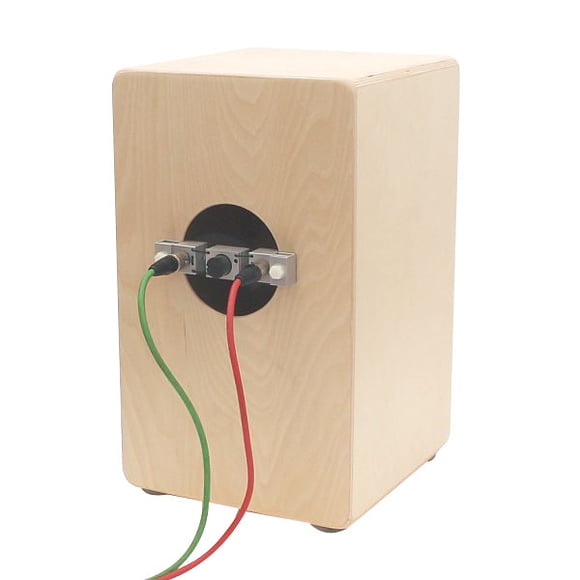10. Mic setup
Setting up a recording scenario for a cajón offers so many options that you could practically write volumes about the topic. We have summarised the most important aspects for you here. Your personal preferences, the space you are working in, the music environment, and last but not least the equipment you have at your disposal - all these factors decide which option is the one for you.
In live recording it is often desirable to choose an uncomplicated setup and to avoid other instruments' or monitor speakers' signals interefering too much in the cajón's. For this reason, putting a boundary mic into the cajón is a popular solution. Doing so allows you to do without a mic stand, the mic is well isolated from other sound sources inside the cajón body, and if the cajón is moved during play, the mic will always be in the right place nevertheless. But the cajón's natural sound is adulterated slightly by the resonance inside the body.
If the stage isn't too noisy, you can also put the boundary mic on the floor in front of the cajón, which, while there will be more stage noise in the signal path, preserves the instrument's natural sound.
Another popular solution is placing a dynamic instrument or bass drum mic onto the sound hole. In doing so, the mic capsule should either extend slightly into or be mounted at a short distance from the sound hole, as the air currents in the opening itself are so strong that distortion may occur.
In addition, a second mic may be put in front of the cajón in order to record bass (rear mic) and snare (fround mic) sounds separately and process them thus on the mixing desk. In this setup, the mic should be placed as close to the cajón as possible and directed towards the upper third of the playing surface. Likewise, the phase in one of the mics should be reversed so as to avoid frequency cancellation.

Finhol Cajomic Two In One: a combination of a free-floating mic capsule for the sound hole and a condenser mic extending into the cajón's interior.
In the studio, you usually need to worry less about stray noises from other instruments or too many stands than on the stage. This is why condenser mics are usually used here, as they tend to be more faithful in the higher frequencies but more liable to produce feedback than dynamic mics at the same time.
The most common method in studios is probably putting a bass drum mic behind the sound hole and a small-diaphragm condenser mic in front of the cajón. Broadly, the same rules apply as in live mic setups, but there is more tolerance as far as the distance of the mic is concerned.
If you desire a broad stereo image, you can position two condenser mics in front of the cajón in a close A-B arrangement.


